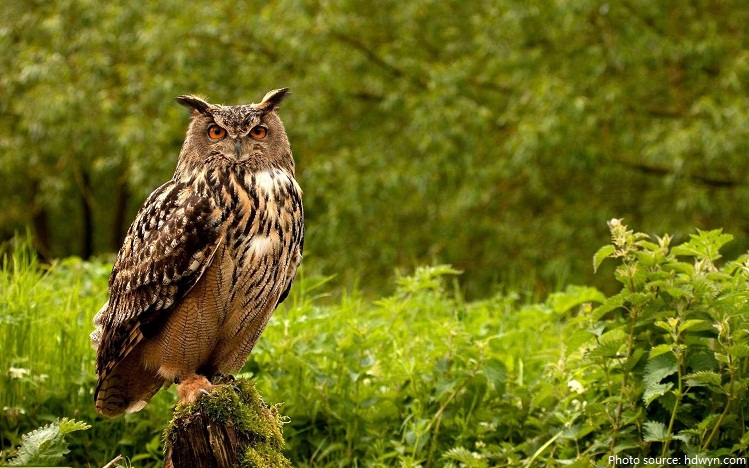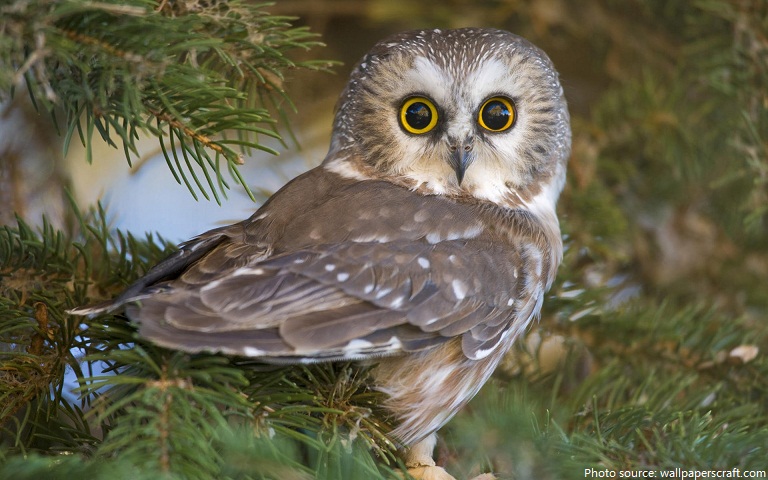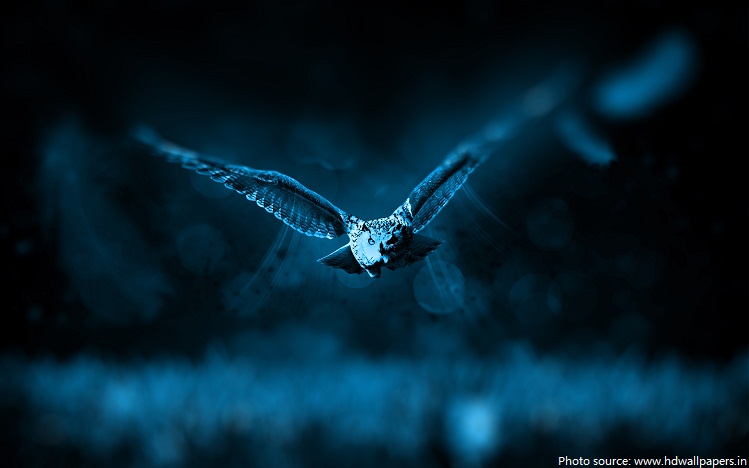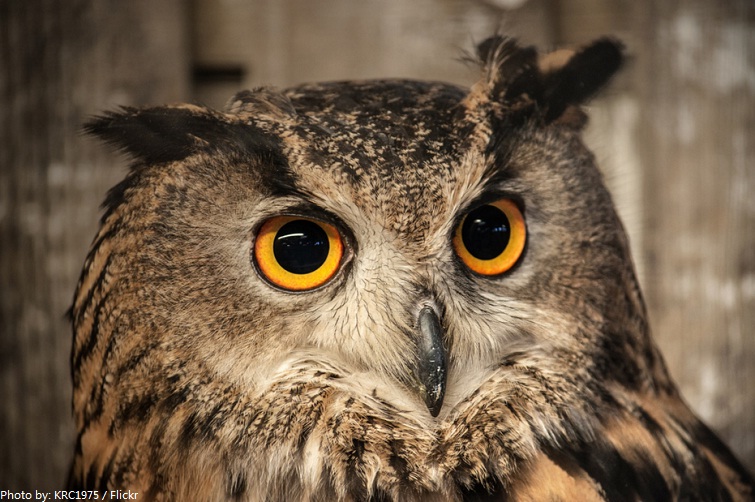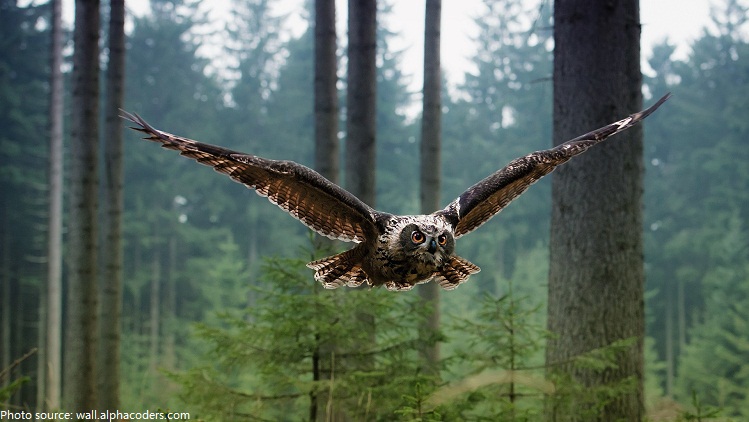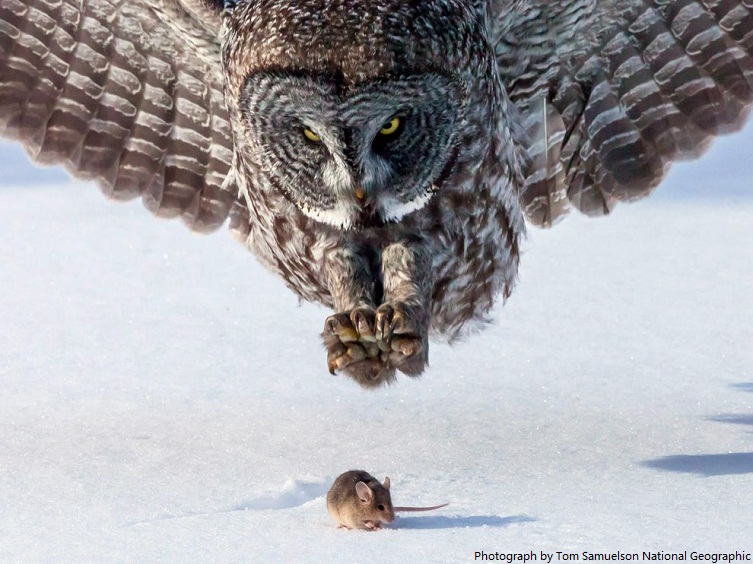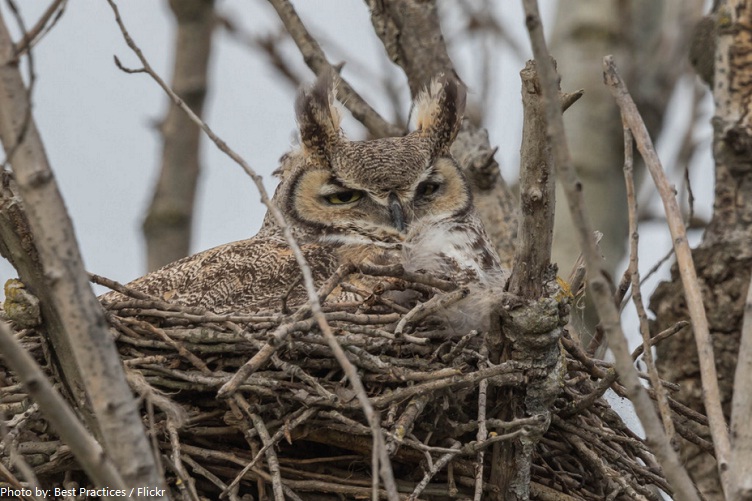Owls are a nocturnal birds of prey with large eyes, a facial disc, a hooked beak, and typically a loud hooting call.
Owls belong to a group of birds that includes about 205 species.These species are sorted into two basic groups, the true owls or typical owls, Strigidae; and the barn owls, Tytonidae.
Barn owls have a heart-shaped face, long legs and powerful talons. There are 16 species of barn owls.
Typical owls are more diverse than barn owls, with nearly 190 species in about 23 genera.True owls have a round facial disc, a short tail and a large head.
Typical owl is from 13 to 71 centimeters (5 to 28 inches) tall; Barn owl is from 23 to 53 centimeters (9 to 21 inches) tall.
The largest are Eurasian eagle-owl [pic. below] and Blakiston’s fish owl (Bubo blakistoni), they can reach weight of around 4.5 kilograms (10 pounds) and a wingspan of 2 meters (6.6 feet).
The smallest is elf owl (Micrathene whitneyi) reaches weight of only 40 grams (1.4 ounces) and length of 14 centimeters (5.5 inches).
Captive owls have been know to live as long as 20 years with the larger species.
Owls are found across all continents except Antarctica.
Owls live in a variety of habitats, including coniferous forests, mountains, deserts, and plains. The snowy owl lives in the cold tundra of the north.
Owls vary on their color due to environmental changes. They change their color to match or camouflage into their environment.
Most owls are nocturnal, actively hunting their prey in darkness. Several types of owl, however, are crepuscular—active during the twilight hours of dawn and dusk
An owl has the best night vision of any animal, and its hearing is nearly as acute.
Owl can hear a mouse stepping on a twig from 23 meters (75 feet).
Every owl has two huge holes in its skull for ears, along with a facial disc that channels sound into the ear openings. Owl ears don’t look like our ears, but they are incredibly good at picking up sounds.
An owl’s eyes are enormous in relation to the size of its body.Because the owl’s eyes are so large, they have a large surface area to collect light.Specialized cells in their eyes called rod cells help these birds see in low light situations.
An owl’s eyes are supported by bony eye sockets and they cannot turn their eyes. Instead, owls rotate their heads up to 270 degrees (135 degrees to either side), but they cannot turn their heads all the way around.
The forward facing aspect of the eyes that give an owl its “wise” appearance, also give it a wide range of
“binocular” vision (seeing an object with both eyes at the same time).
Many species of owls have special flight feathers adapted for silent flight.Where other birds have stiff feathers that make a whooshing sound when they fly, owl feathers have soft edges that allow the birds to fly silently.This is important for owls, as they can swoop down on prey without being heard.
Many owl species have a thick covering of feathers on their legs and feet, which protects them from snake and rat bites.
The beak of the owl is short, curved and downward-facing, and typically hooked at the tip for gripping and tearing its prey.
Owls have zygodactyl feet with two toes pointing forward and two toes pointing backward, and all their toes have sharp talons. This gives the birds a stronger, more powerful grip so they can be more effective predators.
Owls are carnivores. They eat rodents, small mammals, fish, birds and insects.
Owls are solitary creatures. Although they do not live in groups, the literary collective noun for a group of owls is a parliament. They are territorial animals which hoot to announce their territory. Not all owl species are capable for hooting.
Owls create a wide variety of sounds or vocalizations.Other than familiar hoot they can make sounds include screeches, hisses, and screams.
Owls are often described as opportunists and rarely build their own nests.Instead, they look for the abandoned nests of crows, hawks, or even squirrels, or may use the crotch of a tree.Owls living in treeless areas nest on the ground or underground in existing burrows.
Number of eggs laid is from 1 to 14 eggs, depending on food supply, although 2 to 6 is the average.
Incubation period is from 15 to 35 days, depending on species.
Young owl chicks get the best of care from their mother for about three months. They are fed, protected from predators, and learn to fly and hunt so they can leave the nest and find territories of their own.
Large owls are occasionally attacked by eagles and wild cats. Small owls are hunted by hawks, falcons, foxes, snakes, and even larger owls.
Around one-third of owl species in the world are either endangered or at risk.
They have held a variety of symbolic roles in culture and have represented misfortune, death, prosperity, and wisdom.
In Hinduism, an owl is the vahana, mount, of the Goddess Lakshmi.
The modern West generally associates owls with wisdom. This link goes back at least as far as Ancient Greece, where Athens, noted for art and scholarship, and Athena, Athens’ patron goddess and the goddess of wisdom, had the owl as a symbol.
Owls are depicted in cave paintings in The Chauvet Cave that date back 30,000 years.
They also appear in Egyptian hieroglyphics.
Owl fossils have been found that are 70–80 million years old.

